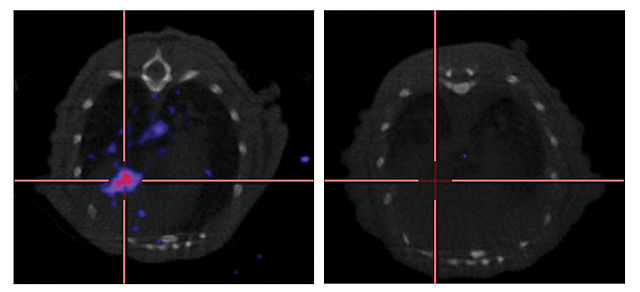An oncolytic virus is a virus that preferentially infects and kills cancer cells. As the infected cancer cells are destroyed by oncolysis, they release new infectious virus particles or virions to help destroy the remaining tumour. Oncolytic viruses are thought not only to cause direct destruction of the tumour cells, but also to stimulate host anti-tumour immune system responses. Oncolytic viruses also have the ability to affect the tumor micro-environment in multiple ways.
Vaccinia virus infected cells expressing beta-glucuronidase (blue colour)
Adenoviral NIS gene expression in a mouse tumour (Located at the crosshairs) following intravenous delivery of virus (Left) compared to an uninfected control mouse (Right)
Herpes simplex virus 1 and 2, also known by their taxonomic names Human alphaherpesvirus 1 and Human alphaherpesvirus 2, are two members of the human Herpesviridae family, a set of viruses that produce viral infections in the majority of humans. Both HSV-1 and HSV-2 are very common and contagious. They can be spread when an infected person begins shedding the virus.
Herpes simplex virus
Herpes simplex virus 2 capsid
Micrograph showing the viral cytopathic effect of HSV (multinucleation, ground glass chromatin)





